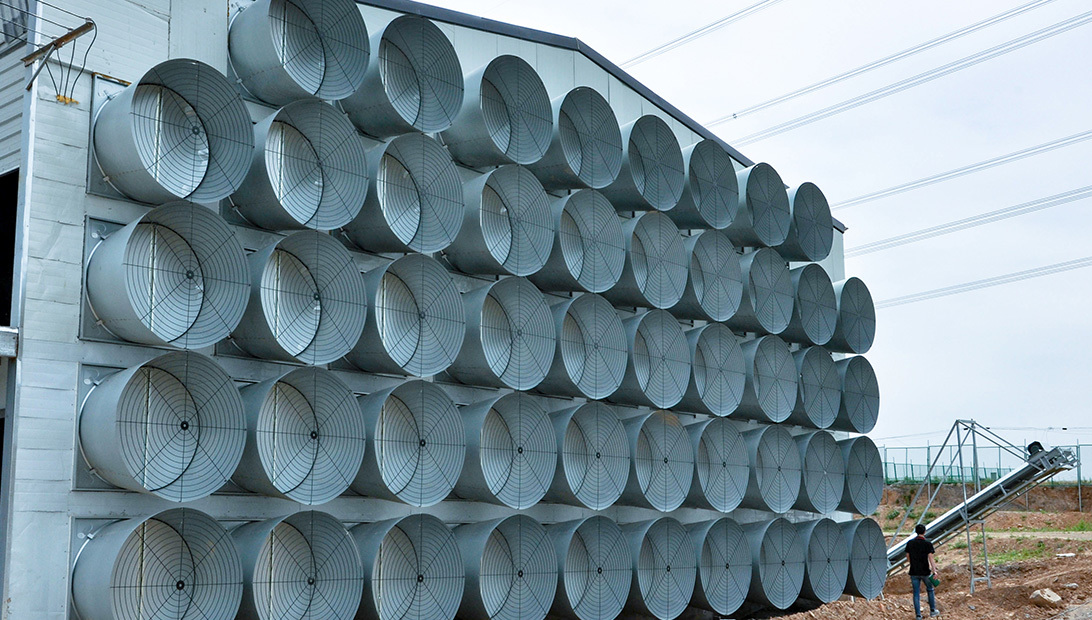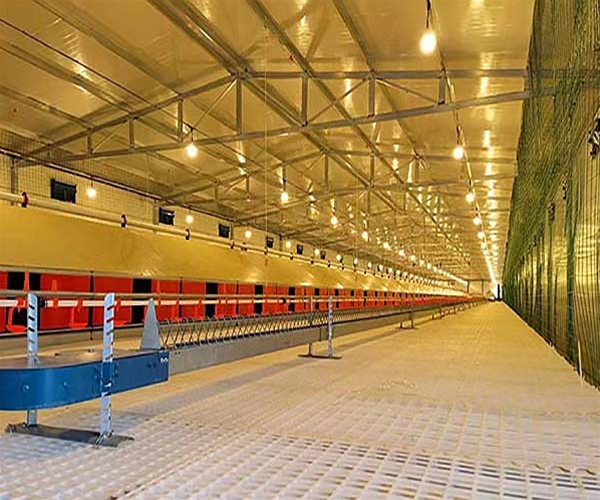Install poultry house fans is important in modern poultry farming, proper ventilation is crucial to ensuring the health and productivity of the flock. Correct fan installation is a key component in achieving efficient airflow and temperature control. Below are the detailed steps for installing fans in poultry houses, from preparation to maintenance.
Ensure Poultry House Fans and Component Integrity
Before beginning the installation process, you must thoroughly check all the fan components:
- Inspect the fan body: Ensure you find no damages, cracks, or deformations in the fan body. Make sure you securely fasten all the components.
- Check the fan blades: Manually rotate the fan blades to ensure no friction or collision occurs. Repair or adjust the blades as needed if you detect any issues.
- Verify tools and cleanliness: Make sure no tools or debris are inside the fan or ducts, as this could impact performance and safety.
Installation: Proper Alignment and Mounting
When you install fans in the poultry house, follow these guidelines to ensure the correct setup and optimal performance:
- Ensure correct airflow direction: Confirm that the airflow direction aligns with the ventilation needs of the poultry house.
- Connect the fan to the ducts: The fan should connect smoothly to the ducts without forced connections or excessive weight.
- Pipe configuration: You can opt for a series or parallel connection based on whether you want to increase air pressure or airflow.
- Reduce vibration: For horizontal installations, place vibration-damping rubber pads (10-20mm thick) on the mounting bracket or foundation to reduce vibrations during operation.
Start-Up and Testing: Ensure Smooth Operation
Before using the fan system, perform the following checks to ensure it works properly:
- Check motor insulation and wiring: Confirm that the motor’s insulation is intact and the wiring is correct.
- Trial run: Test the fan by briefly powering it on to ensure the fan blades rotate in the correct direction.
- Monitor fan operation: Begin full operation only after ensuring the fan works properly.
Common Types of Poultry House Fans and Their Features
Various types of fans suit different poultry house needs. Here are the most common ones used in modern poultry farming:
- Side Fans (36-inch): These fans are commonly used in smaller poultry houses and typically have a capacity of 280 cubic meters per minute.
- Axial Fans (55-inch): These larger fans handle higher airflow, around 630 cubic meters per minute, making them ideal for larger poultry houses.
- Fan Blade Materials: Common materials for fan blades include aluminum alloy and stainless steel, both of which are durable and reliable for long-term use.
Poultry House Fan Operation and Ventilation Modes
Poultry houses use several ventilation modes based on the pressure differences inside and outside the building. These modes help maintain optimal air quality and temperature control:
- Natural Ventilation: This method relies on open vents for natural airflow between the inside and outside of the poultry house, requiring no mechanical equipment.
- Positive Pressure Ventilation: Fresh air blows into the house, and stale air exits through exhaust vents. This method is typically used in the winter.
- Negative Pressure Ventilation: The most common method in modern poultry houses. Exhaust fans are installed on one wall, and fresh air enters through intake vents on the opposite side. This creates a negative pressure inside the house, drawing in fresh air.
Ventilation Mode Variations
- Horizontal Ventilation: Install exhaust fans on one wall and intake vents on the opposite wall. This method works well during cold weather or for young birds.
- Transitional Ventilation: A mix of exhaust fans and intake vents maintains temperature control and air freshness. This method is ideal for medium-aged birds.
- Vertical Ventilation: Use vertical ventilation in high-temperature environments, where fans at the end of the house draw air from wet curtains for cooling.
- Ducted Ventilation: Air is drawn through ducts into the house and expelled through specific vent openings. This method is ideal for early stages of bird development.
Importance of Proper Fan Installation and Maintenance
Properly installed fans are essential in modern poultry farming to maintain airflow, temperature, and overall flock health. Accurate fan calculation, installation, and regular maintenance ensure optimal performance and longevity of the equipment. By following these guidelines, poultry house operators can improve ventilation efficiency and ensure their birds’ comfort and productivity.


